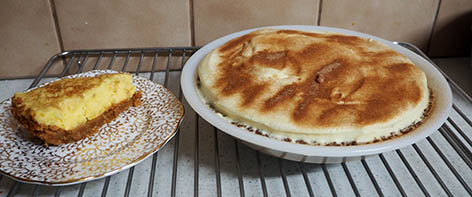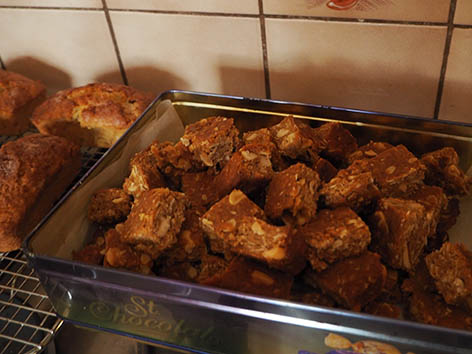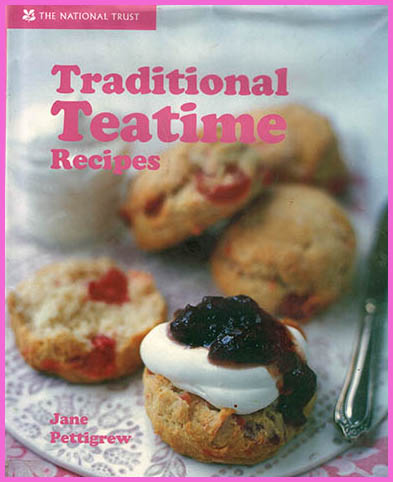One of our longstanding household Xmas traditions has been to host a ‘waifs & orphans’ gathering on Boxing Day. Various people (not necessarily waifs or orphans) drop in throughout the day, starting mid-morning. Some stay just long enough for a slice of fruitcake and a cuppa, others stay on for lunch, and the late arrivals eat the leftovers. It’s a relaxed sort of day and usually includes random frivolity around the pool, games of boules and whatever else comes to mind. Much low-key fun.
This year, mostly because of my fractured knee, we decided to shift gears and introduce a pre-Xmas gathering instead. The idea was that this’d encourage me to have some (highly desirable) R&R on Boxing Day. In theory at least.
Plans were hatched and we invited a selection of family and might-as-well-be-family to join us for what we called our Inaugural Eggnog Night.
 Now, the last time I tried eggnog was many decades ago when my housemate and I found a recipe in a cordon bleu Xmas book I’d been given. Having no idea what to expect, we made a batch… and both thought it was dreadful stuff! The raw egg taste, loosely concealed by the taste of student-affordable rum, was dire in the extreme.
Now, the last time I tried eggnog was many decades ago when my housemate and I found a recipe in a cordon bleu Xmas book I’d been given. Having no idea what to expect, we made a batch… and both thought it was dreadful stuff! The raw egg taste, loosely concealed by the taste of student-affordable rum, was dire in the extreme.
So I guess this does beg the question: Why eggnog?
And the only answer I have is: Eh, why not? It’s the silly-season, after all 🙂
Besides which, every gathering needs a focus – and I’d just found an oddly intriguing recipe for a cooked eggnog. With years more kitchen experience under my belt than in those far-off student days – and better quality rum in stock – it sounded plausible. Since ex-housemate (now sister-in-law*), would be coming along we’d be able to compare notes.
For those who’ve never tried cooked eggnog, it’s essentially a rich egg custard made to a pouring consistency. The rum (or brandy, if you prefer) is added just before serving and there is no raw-egg taste at all. In fact, it’s both very tasty and deliciously rich and creamy – rather like a cream-based liqueur.
The test batch worked well, so I made a veritable vat-o’-nogg for the night. Both it – and the eggnog pie I made with some of it – proved very popular with all, including *SiL. Half the mix was left rum-free for those who’re not that way inclined and they enjoyed it too – which tells me it wasn’t just the better quality rum at work!
I’ll have to experiment with lactose-free milk and cream to see if I can make a batch that works for my lovelies who’re lactose intolerant – but that’s for next time. And yes, there will be a next time. Things are shaping up for Eggnog Night to be the new item on the calendar at Menagerie10 (our place).
If you’d like to make the eggnog and/or the pie, here are the recipes. Let me know how you go and whether you enjoyed them as much as the waifs-orphans-and-others did 🙂
The recipes
1. Cooked Eggnog (this quantity serves 2, but can be scaled up very successfully. I’ve based it on this recipe.)
NOTE: be patient when you make this. Just as with any cooked custard, rushing will do little other than ensure that the mix either curdles or scorches. Just keep the temperature low, stir continuously to ensure even heat distribution and think happy egg-boggy thoughts 🙂
You’ll need: 2 large eggs, 1/4 – 1/3 cup white sugar (depending on how sweet you want it), 2/3 cup full cream milk, 2/3 cup regular whipping cream (NOT thickened cream), ½ tsp vanilla bean paste, about ¼ tsp ground nutmeg. You’ll also need a heavy-based saucepan, whisk, metal spoon, 2 mixing bowls, a metal sieve, and a food/candy thermometer.
- Break the eggs into the bowl; add the sugar and whisk well. Pour the milk into the saucepan and heat over a low heat to 160F – do NOT boil. Remove from the heat when it gets to 160F.
- After a quick re-whisking of the egg/sugar mix, SLOWLY pour the hot milk into it. It’s really (really) important to do this slowly and to whisk the mix continuously while you’re doing it – otherwise you’ll end up with little lumps of cooked egg in the mix.
- Pour the combined mix BACK into your saucepan and return it to the stovetop. Bring it back up to 160F, stirring continuously. This will ensure that your mix doesn’t stick to the edges, or scorch/burn on the bottom of the pan.
- Bring the mix back up to 71C (160F), stirring continuously to avoid it sticking or burning. Your aim is for the mixture to thicken slightly, to the point where it will coat the back of your spoon. Be patient, as this takes a while, and keep the heat low/medium-low while you continue to move the whisk around the sides and bottom of the pant.
- Once you’ve reached spoon-coating stage, stir the mix really well and remove the pan from the heat and set aside.
- Pour the cream and vanilla into a clean mixing bowl and whisk until the cream thickens slightly (use an electric whisk if you have one – it’s much quicker!). Stir in the nutmeg.
- Stir your still-hot egg mix, THEN slowly pour this into the cream-vanilla mix, whisking lightly to combine as you pour. Now pour the mix through a sieve to strain out any lumpy bits.
- Refrigerate the eggnog, preferably overnight – or at least for several hours, until cold. Stir in 30- 50ml of rum per cup of eggnog just before serving , depending on preference.
2. Eggnog Pie
This is based on this recipe and is rather like a traditional South African milk tart, but is firmer, less milky and has a delicious ginger crust that makes it even more tasty. It’s also super easy.
The piecrust: 1½ cups ginger biscuit cookie crumbs (the Ikea ginger biscuits work well, but any will do), 1 Tblsp brown sugar, ½ tsp ground ginger, 100g melted butter
- Combine all ingredients in a medium sized bowl, then press the mix into the bottom and sides of a pie plate.
- Bake at 350F / 180C for 10 minutes, then cool completely.
The filling: 1 standard vanilla instant pudding (about 100g), 1½ cups eggnog (you can use the bought stuff, but why not just make some?), 2 cups regular whipping cream.
- Whip the cream until it’s thick and fluffy, but not too stiff.
- In another bowl, combine the instant pudding mix and eggnog.
- Fold the whipped cream into the pudding/eggnog mix and combine well.
- Spoon this mixture into the (cooled) piecrust.
- Sprinkle with cinnamon sugar, then refrigerate for at least 2 hours before serving.





![By Anita Martinz from Klagenfurt, Austria (turnip cabbage) [CC BY 2.0 (http://creativecommons.org/licenses/by/2.0)], via Wikimedia Commons By Anita Martinz from Klagenfurt, Austria (turnip cabbage) [CC BY 2.0 (http://creativecommons.org/licenses/by/2.0)], via Wikimedia Commons](http://52.63.5.46/wp-content/uploads/2016/10/Kohlrabi.jpg)




